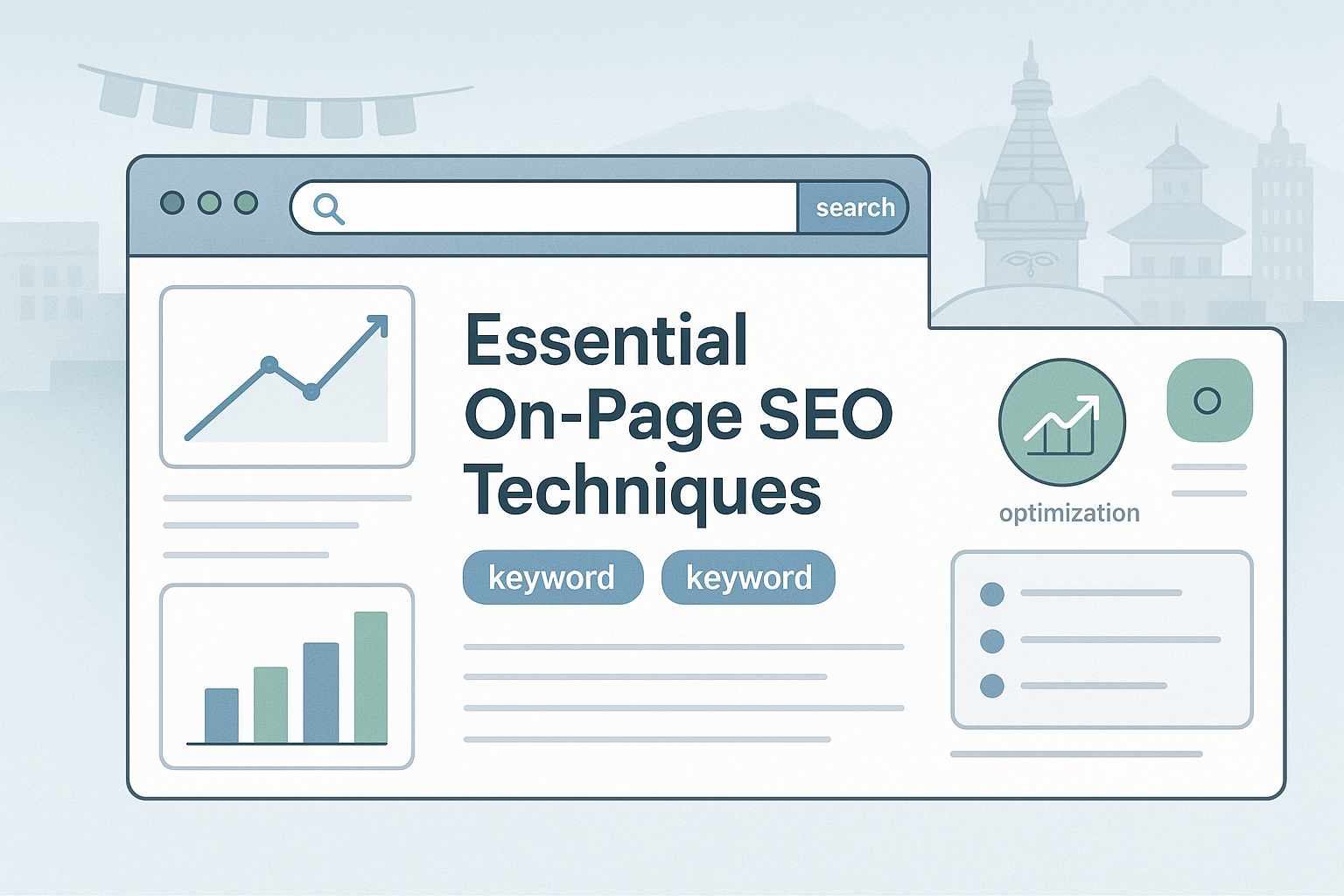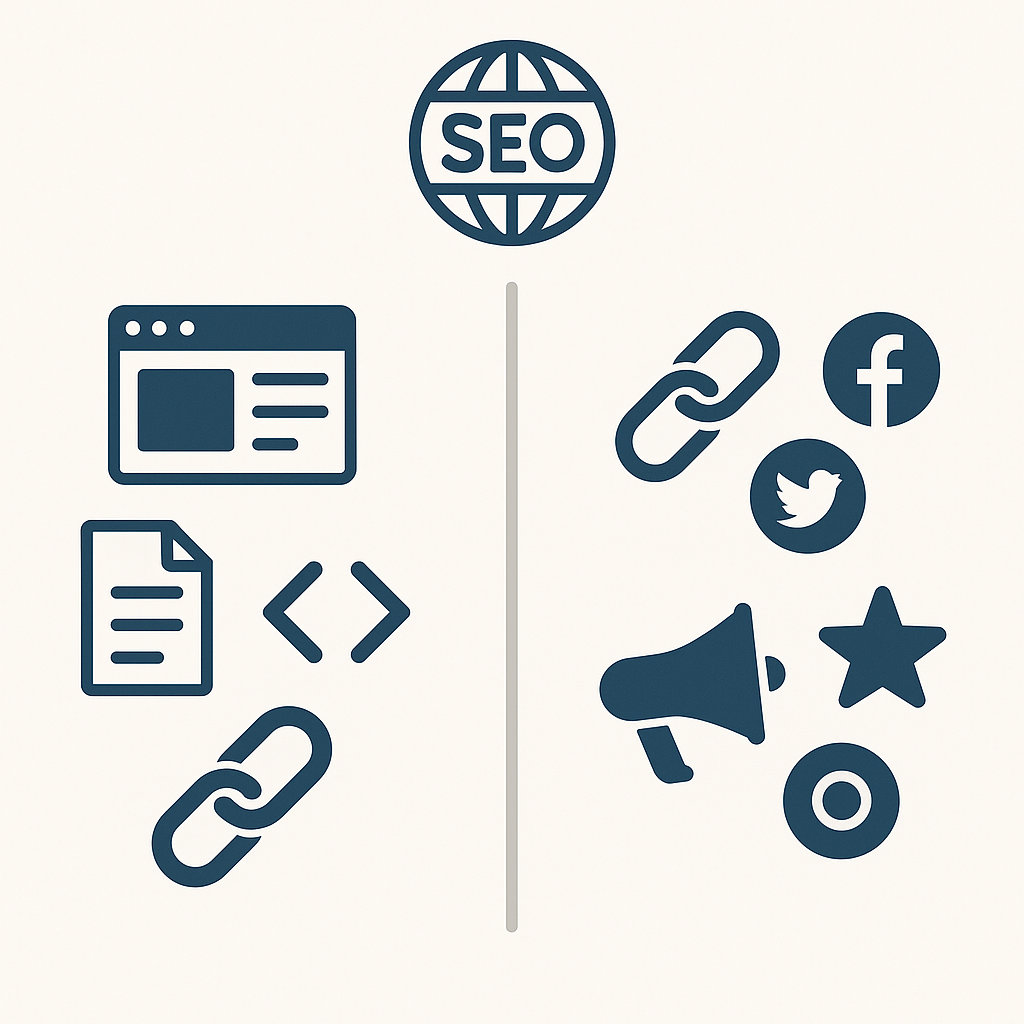
If you want your website to rank higher on search engines, mastering the right On-page SEO techniques is a must. As a trusted SEO agency in Nepal, we know that on-page optimization lays the foundation for long-term search visibility and organic traffic growth. Let’s dive into the essential on-page SEO strategies that every website owner should implement.
1. Meta Titles and Descriptions
Your page’s meta title and description are the first things people see on search engine results pages. They must include your main keywords naturally and be crafted to attract clicks. A well-optimized title with a clear description can improve your click-through rate and support your SEO efforts.
2. Keyword Research and Placement
Effective on-page SEO begins with thorough keyword research. Identify primary and secondary keywords related to your business. Strategically place them in the URL, page title, headings, meta tags, and throughout the content—but always naturally. Keyword stuffing is outdated and may harm your rankings.
3. Proper Heading Structure
Using headings (H1, H2, H3, etc.) in a clear hierarchy helps both users and search engines navigate your content. A single H1 tag for the main title, followed by well-structured subheadings, improves readability and keyword relevance.
4. URL Optimization
Clean and concise URLs are more SEO-friendly. Keep them short, include relevant keywords, and avoid unnecessary numbers or characters. A user-friendly URL is not only better for SEO but also for user experience.
5. Image Optimization
Images should always be optimized with descriptive file names and alt text that includes your target keywords. This not only improves accessibility but also allows your images to rank in Google Image Search. Don’t forget to compress images for faster page loading.
6. Internal Linking and Site Structure
Internal links guide visitors through your website and help search engines crawl your pages effectively. Linking related pages with descriptive anchor text distributes page authority and improves overall SEO performance.
7. High-Quality Content and Readability
Content is at the heart of on-page SEO. Focus on creating valuable, engaging, and original content that answers users’ queries. Make it easy to read with short paragraphs, bullet points, and clear headings. Well-written content keeps visitors engaged and encourages sharing.
8. Use of Multimedia and Visual Elements
Including multimedia like videos, infographics, and charts enhances user experience and can increase the time spent on your page. Ensure all multimedia is optimized for fast loading and is relevant to your content topic.
9. Page Speed and Mobile Responsiveness
Google prioritizes websites that load quickly and perform well on mobile devices. Optimize your website’s speed by compressing files, using efficient hosting, and minimizing unnecessary code. Always design your site with a mobile-first approach to meet user expectations and SEO standards.
10. Schema Markup and Structured Data
Adding schema markup helps search engines better understand your website content, which can improve your chances of appearing in rich snippets and featured results. Use appropriate structured data types for articles, products, or local businesses to enhance visibility.
11. Canonical Tags and Duplicate Content Prevention
Using canonical tags ensures that search engines index the preferred version of your page, preventing duplicate content issues. Maintain clean, unique content across your website and monitor for accidental duplications.
12. Monitoring Performance and Continuous Optimization
SEO is an ongoing process. Use tools like Google Analytics, Search Console, and SEO audit platforms to monitor your site’s performance. Regularly update your content, fix errors, and optimize new pages to stay ahead of competitors.
13. Local SEO and Google Business Profile
If you are targeting local customers, optimize your website for local SEO. Claim and update your Google Business Profile, add local keywords, and encourage customer reviews. This enhances your presence in local search results and maps.
14. Featured Snippet Optimization
Format your content with clear answers, bullet points, or lists to increase the chances of being featured in Google’s answer boxes. This can boost your visibility even if you are not ranking first organically.
15. External Linking to Authority Sources
Linking to reputable, relevant websites adds credibility to your content and can strengthen your SEO. Make sure your external links enhance the value of your page and open in new tabs for better user experience.
Common On-Page SEO Mistakes to Avoid
Even experienced website owners can make mistakes that hurt their SEO. Some common on-page SEO mistakes include:
Keyword Stuffing: Overusing keywords unnaturally.
Missing Alt Text on Images: Ignoring image optimization.
Ignoring Mobile Responsiveness: Failing to make your website mobile-friendly.
Duplicate Content: Having multiple pages with the same or similar content.
Slow Loading Speed: Neglecting to optimize for faster page loads.
Poor Internal Linking: No clear structure or broken internal links.
Avoiding these mistakes ensures your on-page SEO efforts are effective and future-proof.
On-Page SEO vs. Off-Page SEO: What's the Difference?
On-Page SEO
Off-Page SEO
Focuses on optimizing elements within your website
Focuses on external factors outside your website.
Includes content, meta tags, URL structure, internal links.
Involves backlinks, social media signals, brand mentions.
Direct control over optimization.
Indirect influence through partnerships, PR, and outreach.

Conclusion
Mastering these essential on-page SEO techniques is the first step toward achieving better rankings, increased traffic, and a stronger online presence. As a dedicated SEO agency in Nepal, we help businesses implement effective on-page strategies tailored to their goals. Whether you’re optimizing an existing website or starting fresh, applying these best practices will give you a competitive edge in search engine rankings.
